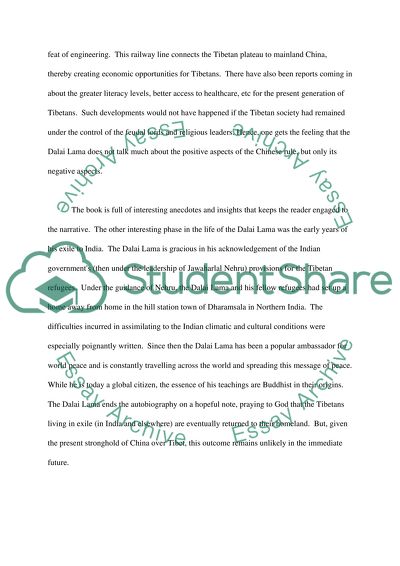Buddhism: Book Report on the Freedom in Exile Essay. Retrieved from https://studentshare.org/miscellaneous/1559658-buddhism-book-report-on-the-freedom-in-exile
Buddhism: Book Report on the Freedom in Exile Essay. https://studentshare.org/miscellaneous/1559658-buddhism-book-report-on-the-freedom-in-exile.


